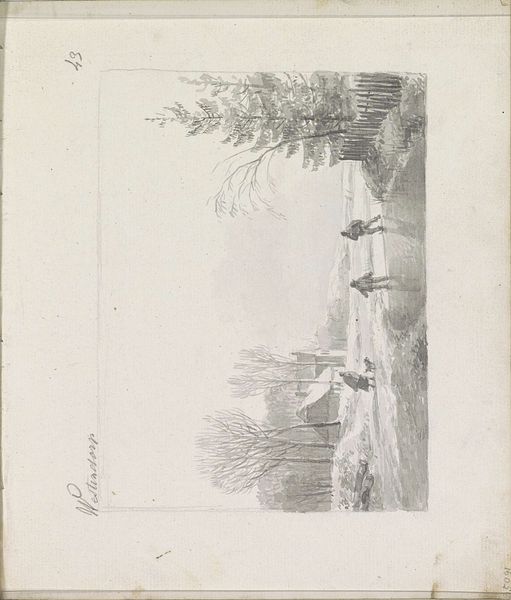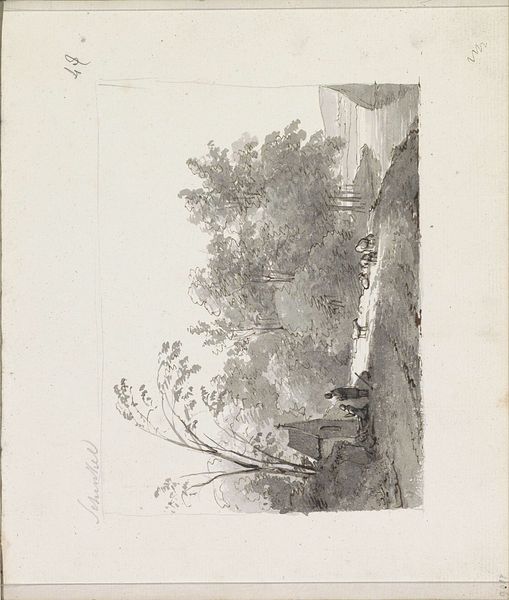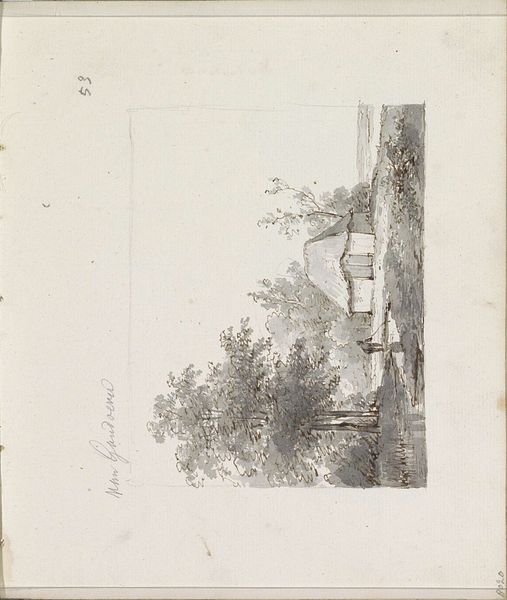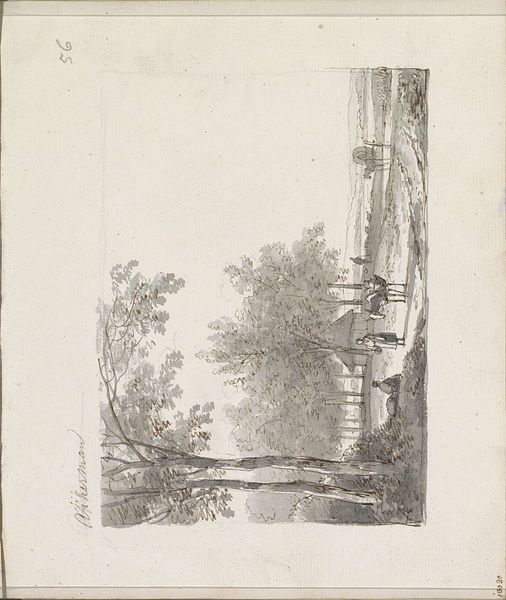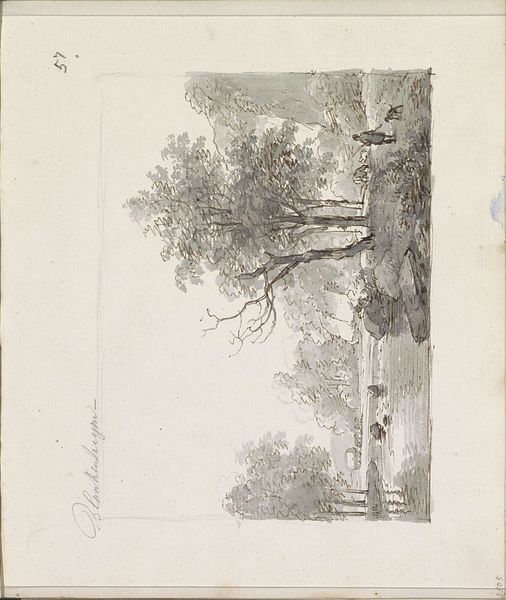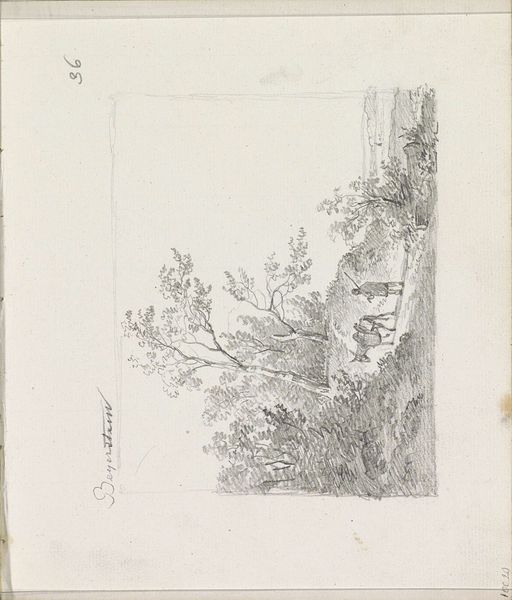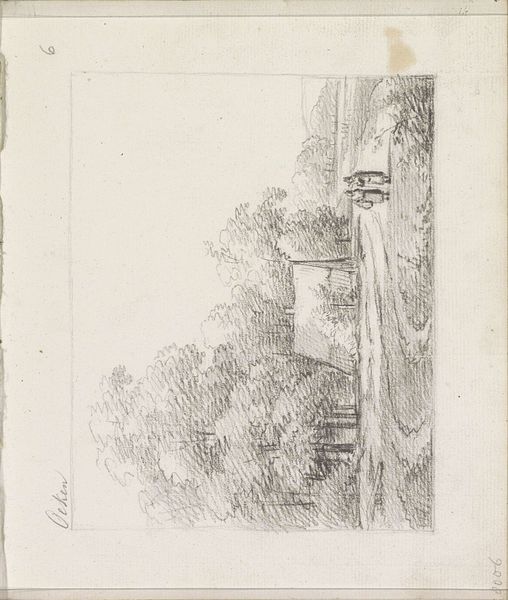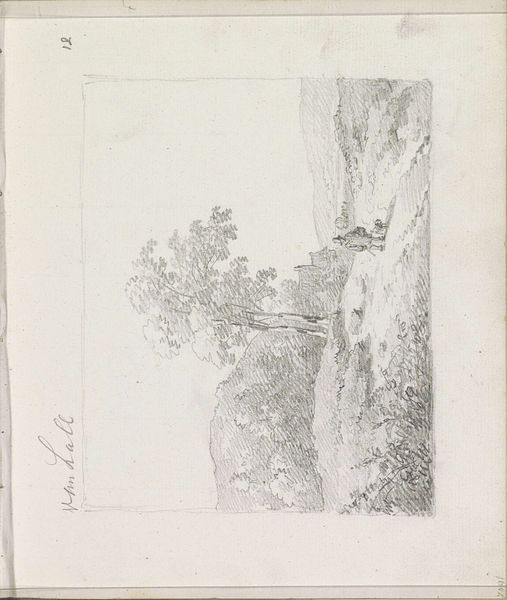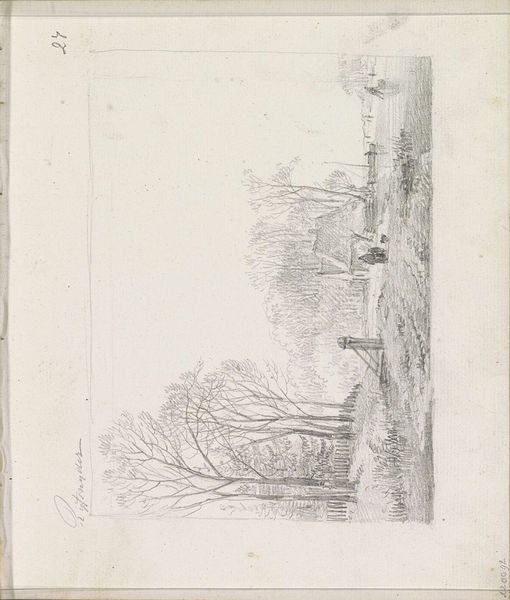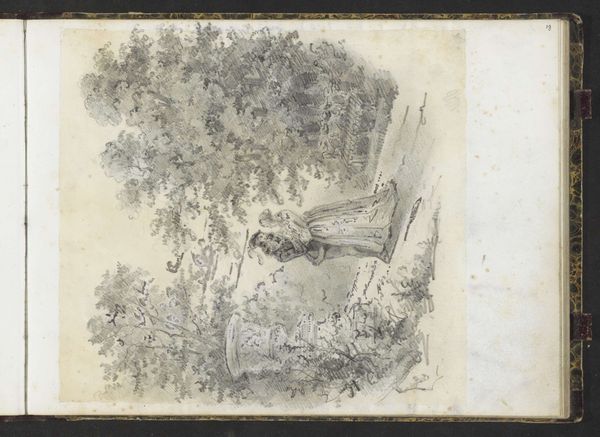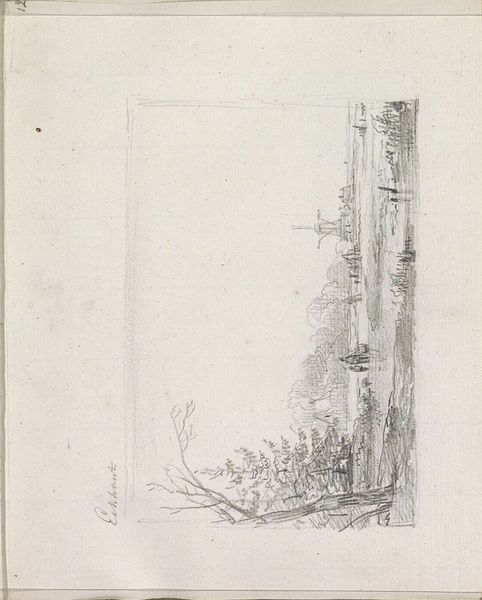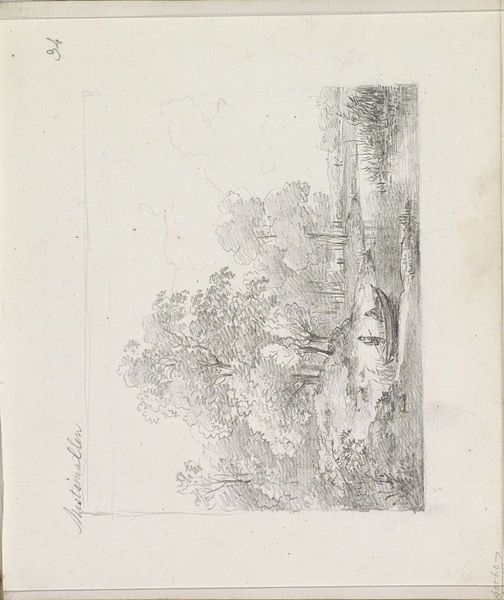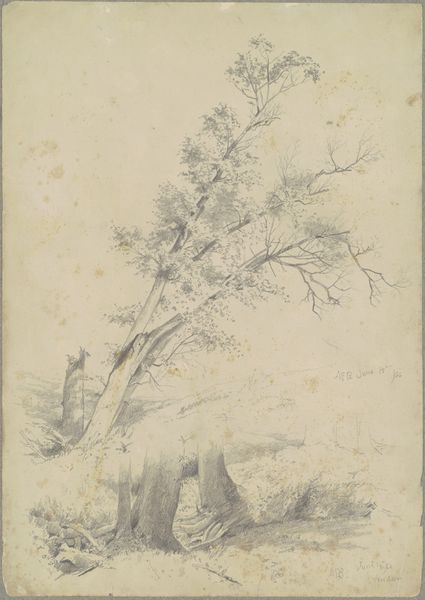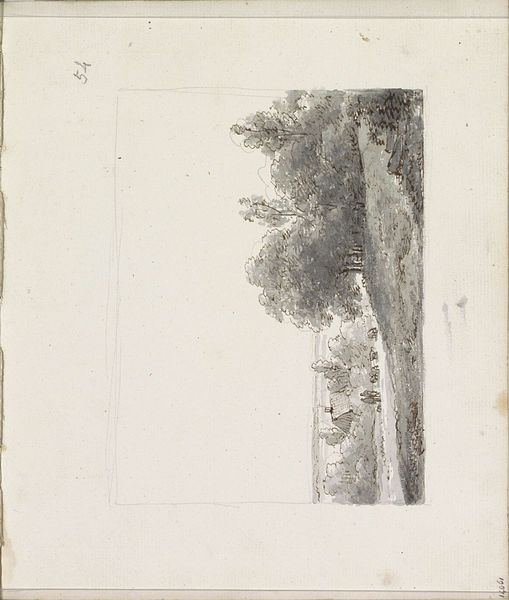
drawing, watercolor
#
drawing
#
landscape
#
watercolor
#
watercolor
#
realism
Copyright: Rijks Museum: Open Domain
Curator: I’m struck by the quiet melancholy of this drawing. There's a gentle stillness, almost as if time itself is suspended above that river. Editor: The way Schelfhout handles the wash is very efficient, especially considering it’s watercolor, and how readily that material can muddy an image if overworked. The texture he gets is all the more impressive when we consider the constraints of that process. He transforms this material, commonly associated with sketching, into something much more precise. Curator: Let's talk about Andreas Schelfhout's "Figures in a Rowboat on a River," likely created between 1825 and 1829. You see figures so small they may almost be ghostly within a rowboat that appears at the bottom, and its presence resonates more from what its being, perhaps an allusion to a character in Charon. It's far beyond a simple portrayal. What do you make of their presence here? Editor: Well, for me, the focus goes immediately to that rowboat and the marks made to present its position, considering both are a clear marker of class divisions. We should observe here how a water-based medium often makes a subject look “bourgeois” as such materials allow an opportunity to be free when time itself means money, a time of production if you may. And given Schelfhout's ties to The Hague School, it aligns with the group's interests. Curator: It is evocative of a journey, perhaps to something beyond where our living eyes can grasp it. I do appreciate how the landscape takes center stage, diminishing human presence almost into insignificance. There is certainly that somber beauty characteristic to landscapes depicting people and nature’s intertwined path. Editor: Indeed, but it goes even further. Water is a recurring symbol; that rowing, combined with watercolor paints are a product, an association, with leisurely activities of the bourgeoisie, where the act of making the painting is elevated above the activity depicted in that painting. Curator: That’s an insightful point about the role of production and class in these choices, which definitely resonates through a materialist reading. Thank you for your consideration of the materiality present in this watercolor scene and our walk. Editor: The symbolism imbued in its execution certainly deepens our understanding beyond just its aesthetic presentation; its material context makes one think!
Comments
No comments
Be the first to comment and join the conversation on the ultimate creative platform.
